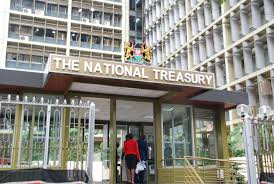
DEVELOPING economies, among them Kenya are turning to off-budget and complex borrowing arrangements in response to a tighter financing environment, World Bank now says.
This is making it harder to fully assess public debt exposures, according to a new World Bank report on debt transparency.
The report, Radical Debt Transparency, shows that while the proportion of low-income countries publishing some debt data has grown from below 60 per cent to more than 75 per cent since 2020, only 25 per cent disclose loan-level information on newly contracted debt.
The rise of complex and often opaque financing arrangements such as private placements, central bank swaps, and collateralised transactions has further complicated reporting.
“Recent cases of unreported debt have highlighted the vicious cycle that a lack of transparency can set off,” said World Bank's senior managing director, Axel van Trotsenburg.
“When hidden debt surfaces, financing dries up and terms worsen. Countries turn to opaque, collateralised deals. Radical debt transparency, which makes timely and reliable information accessible, is fundamental to break the cycle.”
According to the report, debt issued domestically is also increasing, but disclosure standards are inadequate. Countries are also turning to “silent” partial and confidential debt restructurings with select creditors, depriving markets of critical information.
While Kenya has remained committed to transparency on debt, demonstrated by its regular publication of reports on both external and domestic debt, the country's creditors and debt service obligations, there remains gaps amid concerns over rising debt.
The government also reports on the overall sustainability of
public debt through its annual debt sustainability analyses, but concerns remain over governance on public
finances.
During his 2025-26 budget speech, Treasury CS John Mbadi said a comprehensive audit of public debt by the Auditor General is underway with a report to be shared with Parliament once the process is complete, even as he acknowledged public concerns.
“Kenyans have expressed
concerns about the public debt. Indeed, there is a perception of lack of
transparency in the management of public debt. In this regard, I requested the
Auditor General to conduct a comprehensive audit of public debt,” Mbadi said.
Central Bank of Kenya latest data puts the country’s total debt at Sh11.4 trillion as of March this year, up from Sh10.4 trillion same period last year, amid concerns over its sustainability.
The government plans to borrow Sh287.7 billion externally and net domestic borrowing of Sh635.5 billion to bridge the budget deficit in the planned Sh4.23 trillion budget for the financial year starting July 1.
Treasury said Kenya’s public debt is projected to remain within sustainable levels over the medium term. In present value terms, the debt to GDP is projected to progressively decline from 63.0 per cent in 2024 towards the debt anchor of 55 plus or minus five per cent of GDP by 2028.
To support the projected decline in debt levels, the National Treasury will continue implementing various reforms as guided by the Medium-Term Debt Management Strategy including liability management operations, continue pursuing use of concessional loans from multilateral, bilateral and limited commercial sources such as international bond issuances, CS MBadi said.
He said the government will also explore emerging funding instruments such as debt swaps, diaspora bonds, sustainability linked bonds and Environmental, Social and Governance debt instruments to fund budget deficit and manage public debt.
“This strategic approach will not only diversify our financing options but also strengthen international partnerships and promote sustainable growth,’ said Mbadi.
The government has also committed to transparency and improving efficiency on public debt service.
To this end, National Treasury is in the process of integrating the Commonwealth Meridian Debt Management system with the Integrated Financial Management Information System (IFMIS) and the core banking systems of Central Bank of Kenya.
World Bank recommends a fundamental shift in how debtor and creditor countries report and disclose debt, including broader coverage of what is reported and deeper, loan-by-loan disclosures, with a need for urgent steps to improve transparency practices.
These include legal and regulatory reforms mandating transparency in loan contracts and disclosure of lending terms, full participation by creditor countries in comprehensive debt reconciliation processes, more regular audits and national better oversight, and the public release of debt restructuring terms once agreements are finalised.
“Debt transparency is not just a technical issue—it is a strategic public policy that that builds trust, reduces borrowing costs and attracts investment,” said Pablo Saavedra, World Bank’s Vice President for Prosperity, “Radical debt transparency not only supports debt sustainability but also unlocks private sector investment to drive job creation.”











